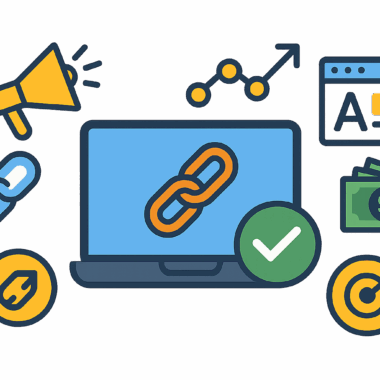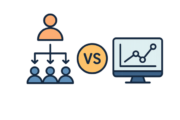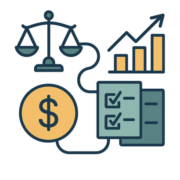

How to Create Affiliate Links: The Complete Guide for Publishers

Content:
- How Do Affiliate Links Work?
- Types of Affiliate Links
- Where to Get Affiliate Links
- How to Create Affiliate Links (Step-by-Step)
- Best Practices for Affiliate Link Placement
- Tools for Managing and Tracking Affiliate Links
- Common Mistakes to Avoid
- Legal & Compliance Considerations
- Conclusion
- FAQ
An affiliate link is a unique URL assigned to an affiliate that directs traffic to a merchant’s product or landing page. These links track user activity such as clicks, conversions, and sales through embedded parameters or cookies.
The purpose of an affiliate link is to attribute credit to the referring affiliate and ensure they receive a commission for driving the desired action. These links are the cornerstone of performance-based marketing models where compensation is directly tied to results.
How Do Affiliate Links Work?
Affiliate links contain tracking codes that identify which affiliate generated the click or sale. When a user clicks an affiliate link, a tracking system records their activity—either by cookies, pixels, or server-side methods.
If the user completes the desired action (e.g., purchases, signs up), the affiliate is credited with the referral, and commission is calculated accordingly. Proper attribution and tracking infrastructure are essential for the integrity of affiliate programs.
Types of Affiliate Links
There are several variations of affiliate links used by publishers depending on the platform and technical requirements:
- Direct Affiliate Links: Basic URL with embedded affiliate ID.
- Cloaked or Shortened Links: Masked URLs for branding or click protection.
- Deep Links: Directs to specific product pages instead of homepages.
- Smart Links: Dynamic links that adapt based on geography or user behavior.
Where to Get Affiliate Links
Affiliate links can be obtained through multiple sources depending on the structure of the affiliate relationship. Publishers typically join programs via the following platforms:
- Affiliate Networks (e.g., CJ, ShareASale, Rakuten).
- In-House Programs from specific brands.
- Marketplaces such as Amazon Associates or ClickBank.
Each source provides access to a dashboard or API for link generation, reporting, and performance tracking. The choice depends on your content niche and target audience.
How to Create Affiliate Links (Step-by-Step)
Creating affiliate links involves simple but structured steps. Here’s a general guide:
- Sign up for the affiliate program or network.
- Log in to your affiliate dashboard.
- Choose the product or landing page you want to promote.
- Generate the affiliate link from the dashboard.
- Optionally cloak or shorten the link using a link manager or redirect.
- Place the link in your content or campaigns.
Best Practices for Affiliate Link Placement
To maximize conversions and user trust, publishers must use affiliate links strategically. Link context and visibility matter.
- Place links in high-visibility areas: product comparisons, buying guides, or call-to-action blocks.
- Use the ‘nofollow’ and ‘sponsored’ HTML attributes to maintain SEO integrity.
- Always disclose your affiliate relationships clearly to comply with legal and ethical standards.
Tools for Managing and Tracking Affiliate Links
Managing a growing portfolio of affiliate links requires specialized tools that offer real-time reporting, link organization, and performance optimization.
One notable example is iREV, a performance marketing platform that supports advanced affiliate tracking. iREV offers deep campaign analytics, customizable tracking infrastructure, and support for hybrid commission models. Its affiliate dashboard includes fraud detection, role-based access control, and integrations with CRMs and payment gateways—making it an ideal choice for serious publishers and advertisers.
Other tools include Pretty Links (for WordPress), ThirstyAffiliates, Voluum, and ClickMeter. Choosing the right platform depends on your traffic volume and monetization goals.
Common Mistakes to Avoid
Affiliate marketing can deliver consistent revenue, but even minor implementation mistakes may compromise performance, reputation, or compliance. Identifying and avoiding common errors is essential for maintaining both credibility and conversion rates in affiliate campaigns.
Even experienced publishers can make errors in link implementation. Key mistakes include:
- Not disclosing affiliate relationships properly.
- Using broken or expired links.
- Failing to tag links correctly, leading to tracking loss.
- Overloading content with links, reducing user experience.
- Ignoring mobile responsiveness or deep link optimization.
Legal & Compliance Considerations
Affiliates are legally required to disclose commercial relationships under FTC guidelines. This includes clear language such as ‘This post contains affiliate links’ near the promoted content.
Additionally, GDPR and privacy laws may require explicit consent for tracking cookies. Use CMPs (Consent Management Platforms) where needed and ensure cookie tracking is compliant with local legislation.
Conclusion
Affiliate links are the lifeblood of performance-based monetization for publishers. When created and managed properly, they serve as scalable revenue engines.
Success lies in using the right tools, maintaining compliance, and delivering valuable content that earns clicks. Treat each link as a conversion opportunity and optimize accordingly.
FAQ
- Do affiliate links affect SEO?
They can if not marked with ‘nofollow’. Always use appropriate HTML attributes to prevent SEO penalties.
- Can I create affiliate links manually?
Yes, if the program supports manual URL construction with proper parameters. But dashboard generation is more reliable.
- Are cloaked links allowed?
In most programs, yes—but always check the affiliate terms. Cloaking can improve aesthetics and click-through rate.
- Is affiliate tracking accurate?
With proper attribution and cookie setup, modern systems are highly accurate. Use server-side tracking where possible.

Lead Distribution vs Classic Tracking: When Your Program Needs Both
Efficient lead management depends on two core components: precise measurement of marketing performance and timely processing of every acquired contact. Most organizations invest heavily in analytics platforms but overlook how captured data moves downstream to sales teams.

Affiliate Marketing Playbook for Emerging Markets (Africa, LATAM, MENA)
Emerging markets across Africa, LATAM, and MENA are entering a stage of accelerated digital expansion, driven by increasing smartphone penetration, the rapid adoption of fintech solutions, and a young, highly engaged online population.




